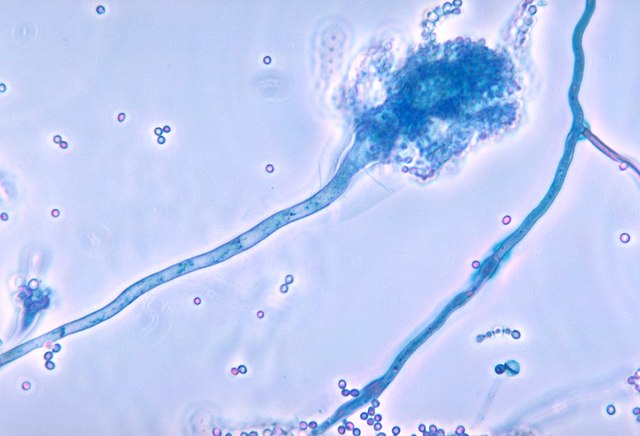Mold health issues refer to the harmful health effects of molds and their mycotoxins. However, recent research has shown these adverse health effects are caused not exclusively by molds, but also other microbial agents and biotoxins associated with dampness, mold, and water-damaged buildings, such as gram-negative bacteria that produce endotoxins, as well as actinomycetes and their associated exotoxins. Approximately 47% of houses in the United States have substantial levels of mold, with over 85% of commercial and office buildings found to have water damage predictive of mold. As many as 21% of asthma cases may result from exposure to mold. Substantial and statistically significant increases in the risks of both respiratory infections and bronchitis have been associated with dampness in homes and the resulting mold.
Light micrograph of the hyphae and spores of the human pathogen Aspergillus fumigatus
Moldy nectarines that were in a refrigerator. The nectarine with black mold is also affecting the nectarine underneath.
Aspergillus is a genus consisting of several hundred mold species found in various climates worldwide.
Aspergillus
Aspergillus on a tomato in detail
Various Penicillium, Aspergillus spp. and other fungi growing in axenic culture
Historical model of Aspergillus, Botanical Museum Greifswald






